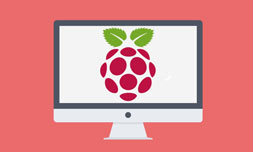Set up Raspberry Pi
Although it might seem daunting at first, setting up your Raspberry Pi is a simple process; you just need to put specific cables into specific slots, just like you would do with a normal-sized computer. The Raspberry Pi usually comes without all the necessary components, such as an SD card, keyboard, or a mouse. You also need a monitor or a TV to work as a display.
Here is a brief description of all the components you will need to start working with your Raspberry Pi:
- Power cable – a standard micro USB connector that runs as 5V can be used to power the Raspberry Pi. The connector can be plugged into a PC USB port or into a wall socket.
- SD card – the Raspberry Pi uses a standard SD card (found in digital cameras) instead of a hard disk. This card will hold the operating system that runs the Raspberry Pi, such as Raspbian. The Raspberry Pi Model B+ uses microSD cards. A minimum size SD card of 6GB is required.
- Keyboard and mouse – any USB keyboard and mouse will suffice.
- Display – the HDMI port is used for the video output of the Raspberry Pi, allowing the Full HD resolution video (1080p) on your monitor or TV. If your monitor doesn’t support HDMI but supports DVI, you will need to buy an HDMI-to-DVI adapter.
The following components are not necesarry to get you started with the Raspberry Pi, but expand the feature set of the device:
- Protective case – used to protect your device from dust or accidental damage. Or just to make it look more attractive.
- Networking – the Raspberry Pi comes with a standard Ethernet port that can give you Internet acess.
- USB hub – although the Raspberry Pi Model B+ comes with four USB ports, you might need additional USB ports for some more complex project. USB hubs are usually very cheap, costing only a couple of dollars.
- Camera board – provides connectivity for a camera capable of capturing pictures and video.
- Wi-Fi adapter – connects to one of the USB ports on the device and provides you with the wireless connectivity.



